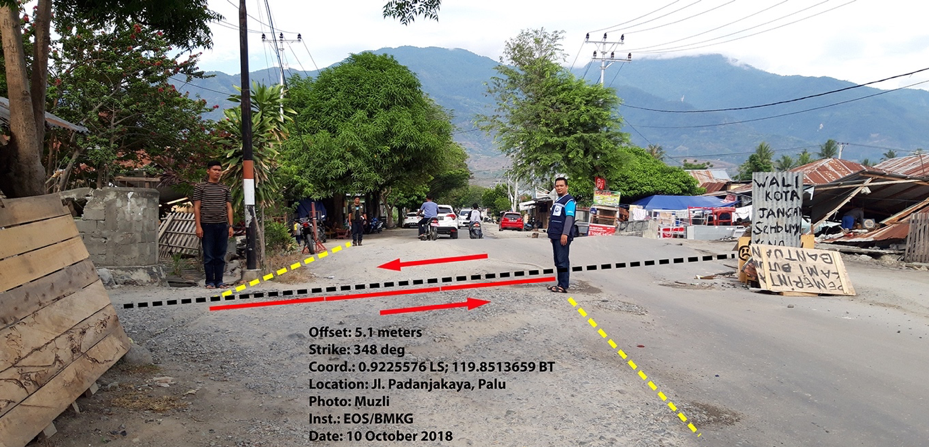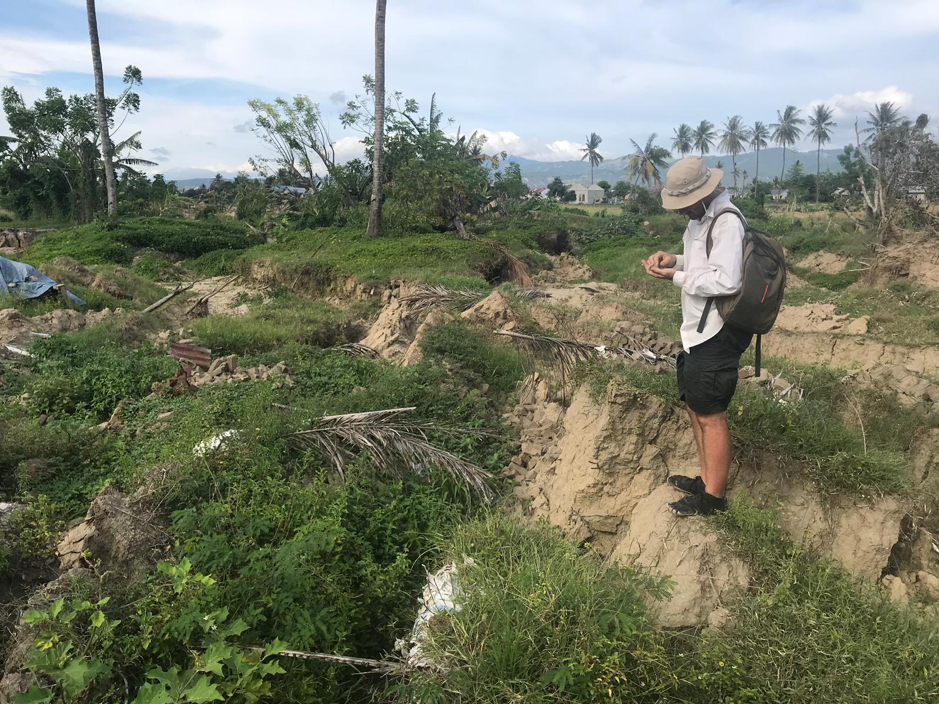
Just after 6pm on 28 September 2018 (Singapore time), a magnitude-7.5 earthquake struck central Sulawesi. The powerful quake generated a tsunami which, along with massive landslides, devastated Palu and the town of Donggala. These resulted in more than 4,000 people dead or missing.
In an economic loss assessment report issued by Indonesia's National Disaster Management Agency (BNPB), the Palu earthquake event caused more than S$1.5 million in damages.
Today, a year later, scientists from the Earth Observatory of Singapore (EOS) and their teams are ready to share some of their findings about this earthquake-tsunami event.
A Complex Rupture Sequence

Using a combination of seismic, geodetic, geologic, and written records, Assistant Professor Wei Shengji and his team discovered that the rupture occurred over multiple faults, measuring more than 100 kilometres in total length. The scientists found that even though an 8-metre surface offset can be seen in the city of Palu, a large part of the rupture did not break through to the surface.
Asst. Prof Wei also found that the rupture accelerated to almost 5 kilometres per second. This puts the event in the super-shear category, where the rupture speed exceeding that of the S-waves can lead to a sonic boom.
Its Sound Waves Reached Singapore
In a recently published paper, Research Associate Anna Perttu, Research Fellow Dorianne Tailpied, Assistant Professor Benoit Taisne, and their European colleagues, proposed that the infrasound signals recorded at different stations, including one in Singapore, came mostly from the earthquake’s rupture zone and the resonance from the nearby mountains.
The Tsunami Waves Covered Palu with Sand

From analysing the sediments of the tsunami deposits in Palu City and Palu Bay, Associate Professor Adam Switzer and his team found that the tsunami velocity exceeded 5 metres per second and reached more than 130 metres inland from the beach. This is faster than most people can run.
The size of the grains and the thickness of the deposit layers also revealed a lot about the characteristics of the tsunami. It was found that the tsunami was likely to be relatively low in power with a shorter-than-usual inundation time. The waves had an unusually short wavelength and that there was a limited source of nearshore sediments.
Irrigation Turned the Landslides Deadly
In a recently published article by Dr Kyle Bradley, a Principal Investigator at EOS and Lecturer at the Asian School of the Environment (ASE), the location of the landslides are shown to perfectly match that of the flooded rice paddy fields. It is believed that the irrigation system and cultivation strategies are responsible for the landslide turning this deadly. By producing a liquefaction effect caused by the strong shaking on a terrain where the water table is shallow, this previously unknown liquefaction hazard now needs to be carefully considered in the reconstruction of the area.
A Collaborative Effort

According to Dr Bradley, scientists at EOS have been working alongside their international partners to better understand the cascading impacts of the Palu earthquake, paying attention to triggered effects like the landslides and tsunami that followed from the quake. “This event highlights the importance of assessing hazards and building resilience in earthquake-prone regions, both prior to and in the wake of large events,” he said.